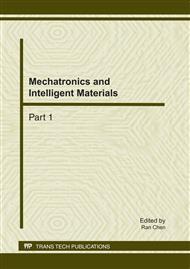[1]
A. Jou, The Weil and Tate pairings as building blocks for public key cryptosystems, Algorithmic number theory (Sydney, 2002), pp.20-32, LNCS. 2369, Springer, Berlin, (2002).
DOI: 10.1007/3-540-45455-1_3
Google Scholar
[2]
K. Zhang. Threshold proxy signature schemes. In Proc. 1st International Information Security Workshop, (1997), pp.282-290.
Google Scholar
[3]
Byoungcheon Lee, Heesun Kim, and Kwangjo Kim. Strong proxy signature and its application. In SCIS2001, (2001), pp.603-608.
Google Scholar
[4]
M. Mambo, K. Usuda, E. Okamoto,. Proxy Signatures: Delegation of the Power to Sign Message[J]. IEICE Trans. Fundam, E79-A(9), (1996), pp.1338-1354.
Google Scholar
[5]
M. Mambo, K. Usuda, E. Okamoto, Proxy Signature for Delegating Signing Operation. ACM96, New York (1996) , pp.48-57.
DOI: 10.1145/238168.238185
Google Scholar
[6]
Takeshi Okamoto, Atsuo Inomata, and Eiji Okamoto. A proposal of short proxy signature using pairing. In ITCC (1), IEEE Computer Society, 2005, pp.631-635.
DOI: 10.1109/itcc.2005.27
Google Scholar
[7]
Takeshi Okamoto, Mitsuru Tada, and Eiji Okamoto. Extended proxy signatures for smart cards. In Masahiro Mambo and Yuliang Zheng, editors, ISW, volume 1729 of LNCS, (1999), pp.247-258.
DOI: 10.1007/3-540-47790-x_21
Google Scholar
[8]
HungMin Sun. An efficient nonrepudiable threshold proxy signature scheme with known signers. Computer Communications, vol. 22(8), (1999), pp.717-722.
DOI: 10.1016/s0140-3664(99)00029-8
Google Scholar
[9]
GuilinWang, Designated-verifier proxy signature schemes. SEC2005, LNCS 2413, (2005), pp.409-424.
Google Scholar
[10]
Guilin Wang, Feng Bao, Jianying Zhou, and Robert H. Deng. Security analysis of some proxy signatures. In Jong In Lim and Dong Hoon Lee, editors, ICISC, LNCS 2971, (2003), pp.305-319.
DOI: 10.1007/978-3-540-24691-6_23
Google Scholar
[11]
Huaxiong Wang and Josef Pieprzyk. Efficient one-time proxy signatures. In Chi Sung Laih, editor, ASIACRYPT, LNCS2894, (2003) pp.507-522. Springer.
DOI: 10.1007/978-3-540-40061-5_32
Google Scholar
[12]
Fangguo Zhang and Kwangjo Kim. Efficient ID-based blind signature and proxy signature from bilinear pairings. ACISP2003, LNCS2727, (2003) , pp.312-323. Springer.
DOI: 10.1007/3-540-45067-x_27
Google Scholar
[13]
Fangguo Zhang, Reihaneh Safavi-Naini, and Chih-Yin Lin. New proxy signature, proxy blind signature and proxy ring signature schemes from bilinear pairing. Cryptology ePrint Archive, Report 2003/104, 2003. http: /eprint. iacr. org.
DOI: 10.1007/1-4020-7987-7_8
Google Scholar


